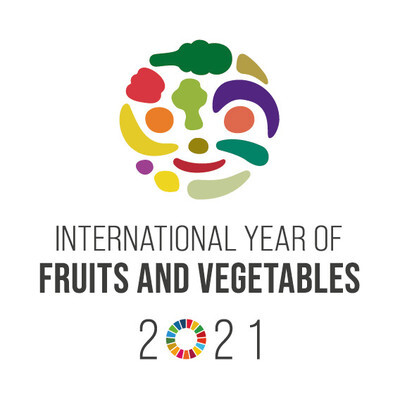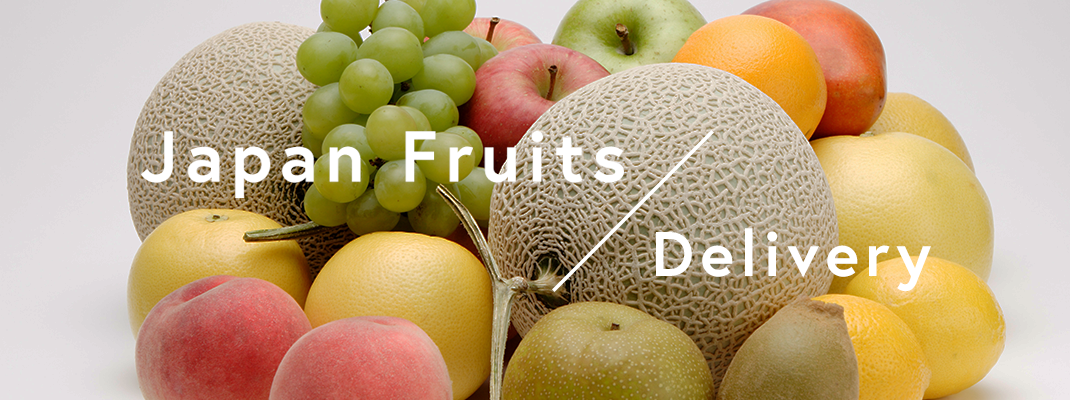September Recipe: Enjoy Grapes!
Easy Recipes to Try at Home
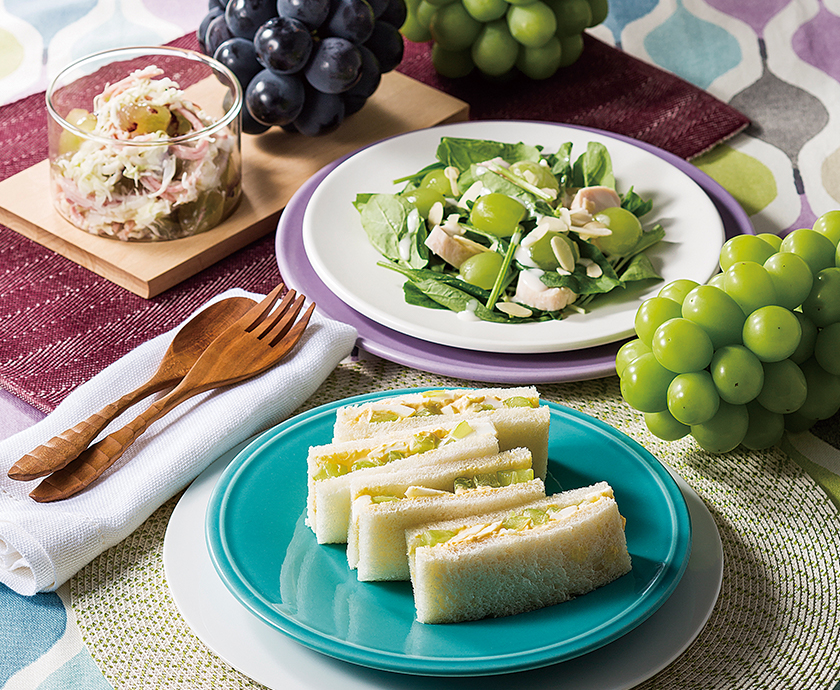
Why not change up the same old recipes by using grapes? Here’s our recommended menu for a fruitful fall.
A Light Touch
Fruit Recipe.1
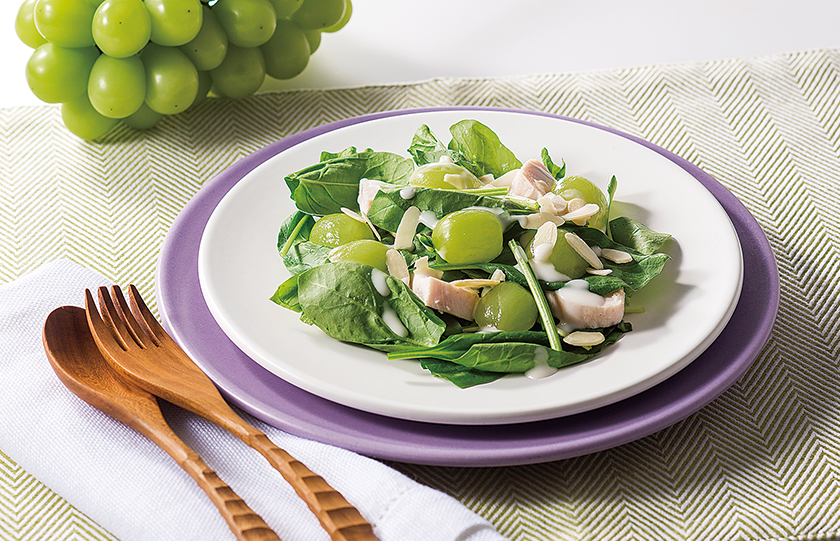
Muscat of Alexandria Green Salad
A refreshing green salad sure to whet your appetite.
Ingredients: Serves 2
*Available prepackaged in stores.
A Light Touch
Fruit Recipe.2

Shine Muscat Tartar Sauce Sandwich
Leaving shine muscats with the peel on gives just the right accent to this dish, and adds a mild sweetness too.
Ingredients: Serves 2
A Light Touch
Fruit Recipe.3
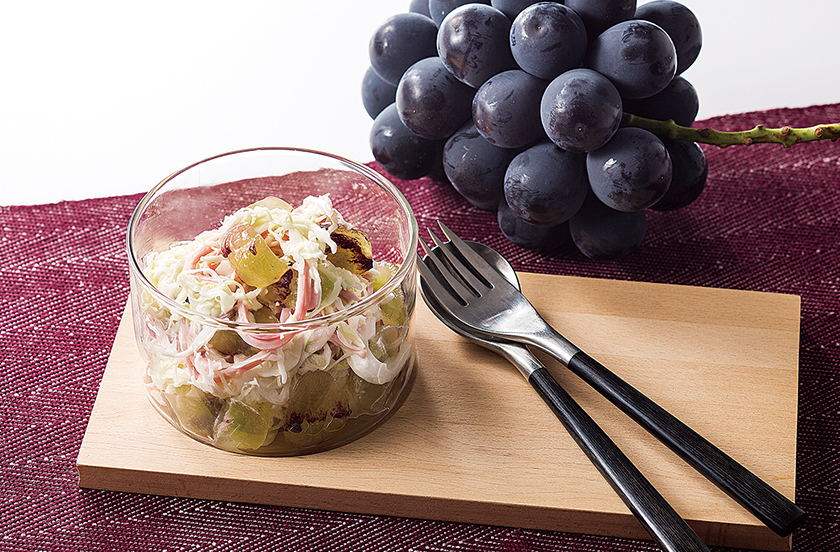
Chilled Pione Grape Coleslaw
Frozen and peeled pione grapes make for a refreshing addition to coleslaw.
Ingredients: Serves 2
Shinjuku Takano Fruit Coordinator
Grapes Grown in Okayama Prefecture
Improved cultivation techniques and an overarching goal of creating the best quality grapes possible drives the research institute found within this extensive grape vineyard.

While Okayama is well known for their white peaches,but has a treasure trove of other fruits to enjoy. Aptly nicknamed the Fruit Kingdom, Okayama is privileged to have an environment not only suitable for fruit tree cultivation, but also exceptionally advanced cultivation technology. This time, we’re focusing on their grapes, which are known for their quality, produced at the Okayama Prefectural Ministry of Agriculture, Forestry and Fisheries Composite Center Agricultural Research Institute (hereafter called the Institute). The aim of this center is to continually work towards improving cultivation technology and practices for the future. Let’s take a closer look at some of the secrets of Okayama’s high quality grapes.
Various kinds of premium grapes are actively cultivated in Okayama prefecture, and the Institute is one of the greatest contributors to the overall improvement of cultivation technology in the area. Their vast vineyard, which covers 2 hectares of laboratories, has been created to allow for research and experimentation on cultivation in various patterns, from open fields to greenhouses, and on numerous courses of grape production.
Of the many cultivars grown in Okayama, the shine muscat have garnered great attention as a variety to watch in the future, especially with regards to warming cultivation, which makes it difficult to produce muscats with a high sugar content; this is a topic that will have great importance nation wide.In warming cultivation, the time wherein the sugar content should be increasing, via long stretches of sunny weather, overlaps with the rainy season in Japan, thus limiting the sun exposure of the grapes. To tackle this problem, three approaches are being studied at the Institute: exposing grapes solely to artificial light, using mulch cultivation sheets to reflect sunlight back onto the grapes, and a combination of the electric light and mulch sheets. The results of these experiments will be fully understood in five years. It will be a great help to grape producers nationwide should it become possible to produce shine muscats with a stable high sugar content via warm cultivation.
Okayama prefecture is the main production area of shien purple grapes, a rare winter grape in Japan, which are popular for their refreshing sweetness and soft flesh. Although it was originally a late developing grape, thanks to experiments conducted by the Institute and technologies developed from them, these grapes can now be harvested as late as December. Further studies are being conducted to better adapt shien grapes for the future.
An original cultivar born from the Institute are the aurora black grapes, characterized by an elegant black purple color and rich sweetness. For these grapes, Okayama prefecture was not only looking for new varieties, but also ones that could survive and ripen in a manner that would allow them to be shipped and sold in perfect condition overseas. This is a difficult feat as grapes and berries tend not to do very well when picked and deprived of sunlight. By advancing the cultivation of grape florets, new ways to enjoy grapes are also being researched. Although the cultivation of aurora black grapes has been limited to Okayama at present, it seems that it will be possible to grow them in other prefectures from 2018. It is expected that even greater improvements in the overall quality of aurora black grapes will be discovered when they are harvested nationwide in the future.
Through research at the Okayama Prefectural Ministry of Agriculture, Forestry and Fisheries Composite Center Agricultural Research Institute, the grapes, white peaches and other fruits of Okayama prefecture continue to evolve day by day – an act that only happens thanks to the cooperation of the fruit producers themselves. Through the united efforts of researchers and producers, with the shared goal of making better fruits and sparing no effort, Okayama is leading the way in high quality grape production.
-
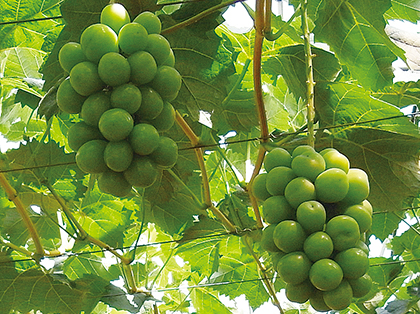
Shine muscats ripened on the vine -
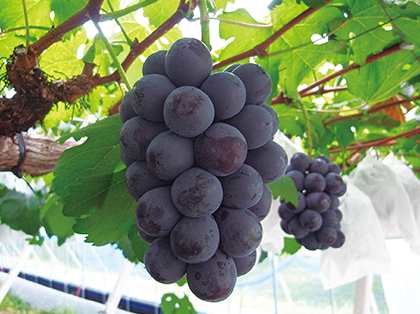
Pione grapes -

Mini aurora black grapes, a sign of the future -
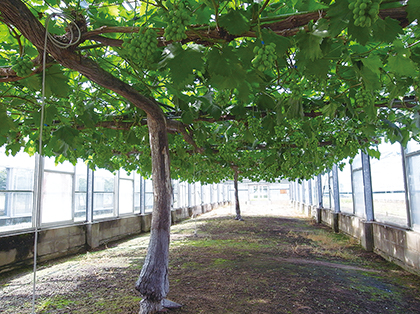
Shien grapes that haven’t changed color yet
What Craftsmanship!!
These beautiful bunches are only the result of their amazing techniques!
Thanks to the fine splicing together vines in their institute, beautiful bunches of shine muscat are possible. As some developing grapes can become entangled in the vines, they are adjusted with sticks in order to artfully arrange the bunches – this can be difficult work as every care must be taken in order to avoid hurting the grapes themselves. As such, research was combined with art to craft the perfect implement to gently and safely move the grapes.
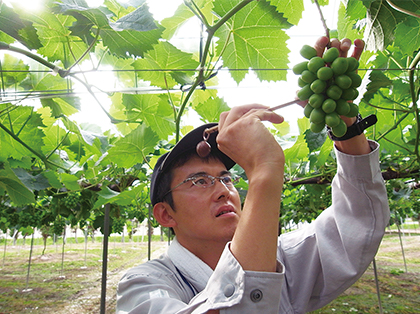
Article sponsored by Shinjuku Takano

